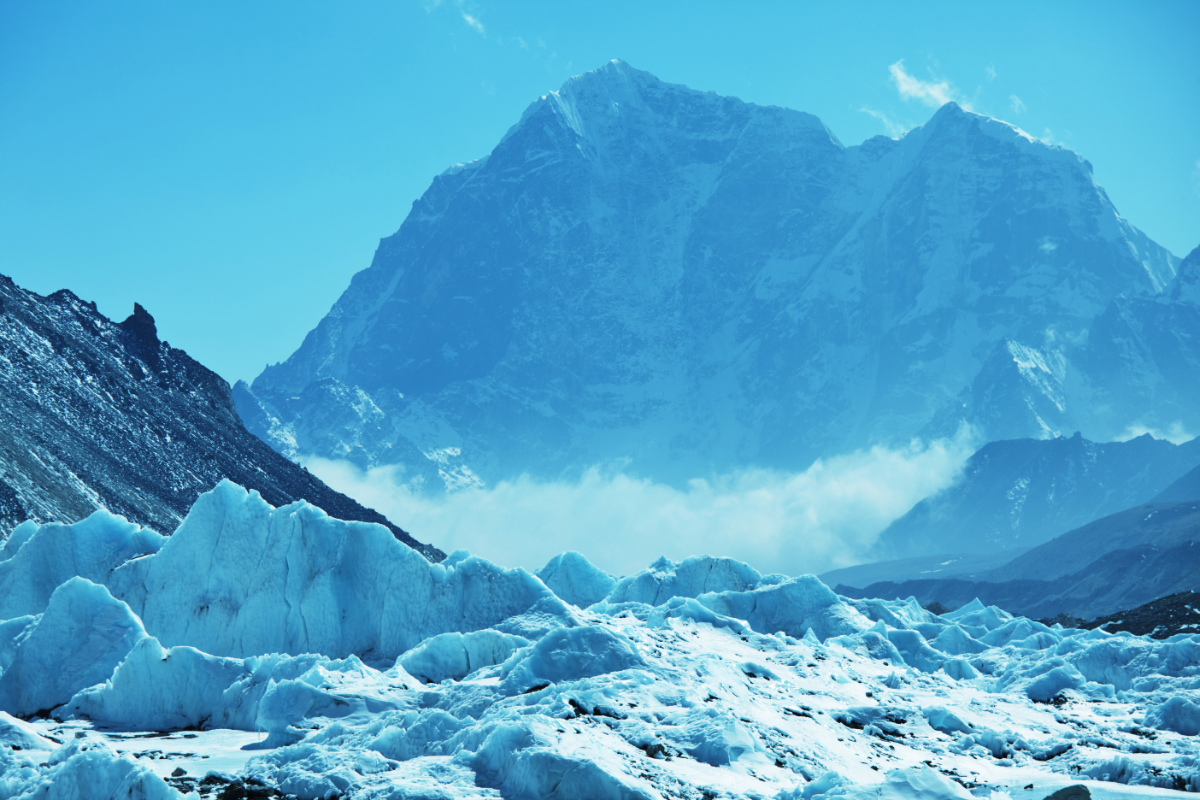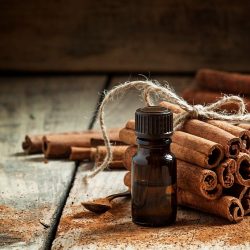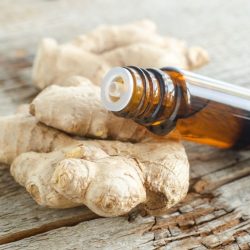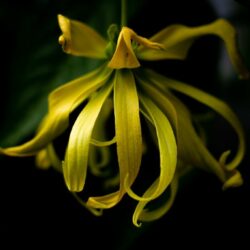Nestled in the breathtaking peaks of the Himalayas lies a rare and precious plant, Himalayan Spikenard(Nardostachys jatamansi). For thousands of years, this unique plant has captured the attention of traditional healers and perfume connoisseurs alike, thanks to its essential oil with its enchanting fragrance and its exceptional therapeutic properties. Himalayan Nard essential oil is a treasure of nature, a legacy of ancient medicinal and spiritual traditions.
In this article, we explore the secrets of this mystical oil. From its origins in the remote valleys of the Himalayas to its many health and well-being benefits himalayan Nard essential oil offers a fascinating journey through history and natural medicine. Discover why this essence is so highly prized in Ayurveda, how it has left its mark on cultural and spiritual traditions down the ages, and what properties make it a must-have natural remedy today.
Prepare to be amazed by the history, science and uses of Himalayan Spikenard Essential Oil, a veritable treasure from the summits.
What are the characteristics of Himalayan Spikenard?
Himalayan Spikenard, whose botanical name is Nardostachys jatamansi, belongs to the Valerianaceae family.
What are its botanical attributes?
Himalayan spikenard is a herbaceous plant. It is characterised by its unbranched rhizome and a bewitching fragrance that leaves no one indifferent. Its luxuriant green basal leaves grow to a considerable size. In contrast, its delicate bells, gathered into a dense head, vary from white to pink.
As for its origin and habitat, Himalayan Nard has its roots in Asia. It thrives mainly in the majestic Himalayan regions, as well as in China, India, Nepal and Bhutan. Today, farmers are successfully cultivating Himalayan Spikenard on European and American soils.
This robust plant braves the intrepid peaks of the Himalayas, growing with determination at altitudes of over 4,000 metres. Rooted in history, it boasts one of the oldest oriental fragrances. It is also one of the seven fragrances mentioned in the Bible. Ancient civilisations carefully exploited this plant to soothe stress and treat skin inflammations. Nard also plays a central role in traditional Indian medicine, Ayurveda.
The essential oil from Nard, imbued with a woody, musky fragrance, is distinguished by its rarity and inestimable value. It has unique therapeutic properties, characterised by its sedative and soothing nature. This specific quality gives Himalayan nard a privileged position in palliative care units, where its usefulness is highly appreciated.
What is its essential oil made from?
Himalayan Spikenard essential oil is made up of :
- Sesquiterpenes: Beta-gurjunene (4.5% – 16%), Seychellene (3% – 8%), Calarene (4% – 16%), α-patchoulene (2% – 12%), 7-Epi-α-Selinene (9%)
- Sesquiterpene ketones: Valerone (23% – 27%)
- Sesquiterpene aldehydes: Valerenal (1.8% – 2%)
The molecules beta-gurjunene, seychellene, calarene, α-patchoulene and 7-Epi-α-Selinene belong to the biochemical family of sesquiterpenes. Thanks to these compounds, Himalayan Nard essential oil has calming, hypotensive, anti-inflammatory, healing and decongestant properties for the venous and lymphatic systems.
The valerone molecule belongs to the biochemical family of sesquiterpene ketones and is distinguished by its healing properties.
Valerenal belongs to the biochemical family of sesquiterpene aldehydes. Its main actions include sedation, relaxation, combating depression and reducing blood pressure.
What are the characteristics of Nard essential oil?
Himalayan Nard essential oil is recognised for its remarkable calming and soothing properties, which can relieve anxiety, fear, nervous tension and the symptoms of psoriasis.
What are the indications for this essential oil?
Himalayan Nard essential oil is characterised by its high concentration of viridiflorol, calarene and alpha patchoulene, which give it a number of key properties.
It has several properties that have been scientifically proven:
- Central nervous system sedative: This essential oil has a significant soothing action on the central nervous system, providing a state of deep calm.
- Respiratory and cardiac calming: Thanks to its components, it helps to significantly reduce the heart and respiratory rate, inducing a feeling of relaxation.
- Circulatory: It promotes blood circulation and strengthens the vein walls, improving blood flow.
- Anti-inflammatory: By regulating the body’s immune response to aggression, this essential oil limits inflammatory reactions, reducing redness and feelings of heat.
- Anti-bacterial: It inhibits the multiplication of bacteria, limiting their development.
It is also used for traditional indications such as :
- Insomnia: It can help combat insomnia by promoting relaxation.
- Anxiety and anguish: Its sedative action makes it useful for calming states of anxiety and anguish.
- Hyperventilation: It helps to regulate breathing, thus helping in cases of hyperventilation.
- Tachycardia: Thanks to its calming effect on the heart, it can be beneficial in cases of tachycardia.
- Psoriasis: Specifically used to treat psoriasis.
- Varicose veins and haemorrhoids: By improving blood circulation, it can be useful in cases of varicose veins and haemorrhoids.
Its action is also recognised at an energetic level. Himalayan Nard essential oil is used to purify auras and environments. Its results are similar to those of rosemary or sage essential oil. It can also be used to help people at the end of their lives, facilitating the process of letting go.
What dosage should I choose?
Himalayan Nard essential oil can be used in several ways, depending on individual needs and preferences:
As a topical application, Himalayan Spikenard can be used:
- Applied directly to non-sensitive skin, in a localised manner, but it is recommended to dilute it 20% in a vegetable oil.
- Friction on the cardiac, solar and sacral plexuses: This application can help to calm breathing and the heartbeat.
- Massage synergy: It can be added to blends of essential oils to treat venous disorders or promote hair growth.
- Application as an unction: The essential oil can be applied to promote sleep and let go.
Himalayan Nard essential oil may only be used orally if prescribed by a doctor.
In olfactotherapy, it helps to develop awareness and strengthen the mind. It is particularly useful for coping with death and facilitating letting go. This essential oil reconnects the spirit to earthly reality and anchors it in the present.
What precautions should I take when using it?
People prone to epileptic conditions and asthma should consult a medical professional before using Himalayan Spikenard essential oil, due to possible side effects and interactions. Users should not use this essential oil on a long-term basis due to the potential for adverse reactions or the development of sensitivities.
Before applying the essential oil to the skin, it must be diluted. Mix 20% essential oil with 80% vegetable oil to moderate its concentration and prevent potential skin reactions. If there is any doubt about skin reactivity, a skin test at the elbow is recommended to check that there is no allergic reaction.
For use in air diffusion, Himalayan Nard essential oil should be diluted between 5 and 10% in other essential oils to avoid too high a concentration in the air. Although pregnant women and babies over the age of three months can benefit from atmospheric diffusion without any proven risk, caution remains paramount.
Other precautions and restrictions also apply to the use of this essential oil:
- Users must be extra vigilant in the event of hormonal disorders due to the oil’s anti-androgenic activity.
- They should not use the oil continuously or persistently.
- Pregnant and breast-feeding women, patients taking anxiolytics and sleeping pills, and children under the age of 6 should not use it.
These guidelines have been developed to maximise the benefits and minimise the risks associated with the use of Himalayan Spikenard essential oil. Users should follow these with the utmost caution to ensure their safety.
What is the history of the use of Himalayan Spikenard through the ages?
This essential oil, distilled from the Nardostachys jatamansi plant, stands not only as a pillar in various ancestral medicinal practices, but also as a cultural and spiritual symbol crossing borders and time. Ancient texts from past civilisations reveal the sophisticated use of Nard, both in therapeutic contexts and on ritual and religious occasions.
How did ancient societies use Himalayan nard?
- Dioscorides[Materia medica, Book I, chapter 7] describes its harvesting, preparation and medicinal uses. It was exported en masse to the East, which was always eager for perfumes. The same Dioscorides, in the preceding chapter (Chapter 6), mentions another nardus. A somewhat confusing reading of this passage mixes up several “nards”. One comes from the Indian subcontinent, the other from Syria.
- Pliny the Elder describes one of these spikenards in his Natural History as follows: “Spikenard is a shrub with a heavy, thick root, but short and black, fragile despite its oily context, with a foul odour like that of nutsedge, a bitter taste and small, tightly packed leaves. Spikenard can be recognised by its lightness, its reddish colour and its pleasant but very astringent flavour” Although he produced a satisfactory description, doubts remain as to whether Pliny travelled to the borders of India and Tibet, at an average altitude of 4,000 m, to bring back an accurate description.
- Theophrastus, followed by Ovid, placed the origin of nard in the northern part of India, which is perfectly correct. So the Greek and the Roman agree. The fact remains, however, that this spikenard, which comes from the mountain and snowy peaks, is a divine emanation. This substance is even sung in the Song of Songs: “While the king is in his enclosure, my spikenard gives its fragrance […] You are the rarest essences: spikenard and saffron, with the finest aromas” (according to the translations of this passage, there is no mention of spikenard but of aspic instead). Horace also uses spikenard.
What is the history of Himalayan nard in the Bible and in Hebrews?
The Hebrews and Romans used it mainly to consecrate their priests or to bless graves. Mentioned in ancient texts, it is one of the oldest perfumes in the world. It is said that Mary Magdalene washed Jesus ‘ feet with essence of nard.
Christians have made nard a symbol of humility. Its fragrance, both dense and light, evokes the smell of humus and decomposing peat. It represents black earth, rich, organic, a little oily, a little bitter, but without coldness, with just the right amount of spiciness and woodiness. Nard is close to the earth, humilis in Latin, which conveys a meaning quite close to the word humus. To say that nard is made up of humility reinforces that of Christ. Just consider its royal and sacred nature in the noble sense, and you’ll have a better understanding of this symbolism.
An excerpt fromSaint John’s Gospel may help: ” Judas the Iscariot, one of the disciples, the one who was going to betray him, said, ‘Why was this perfume not sold for 300 denarii to be given to the poor?’ But he said this not out of concern for the poor, but because he was a thief and, holding the purse, stole what was put into it. Jesus then said: “Leave her alone; she was to keep this perfume for the day of my burial. You will always have the poor with you, but you will not always have me”.
What was the history of Himalayan nard in the Middle Ages?
In the Middle Ages, Odon de Meung, better known by his alias Macer Floridus, wrote a monograph on the plant. It can be found in the De viribus herbarum, which contains references not to a single plant but to two. On the one hand, so-called Indian spikenard, and on the other, Celtic spikenard, which Macer simply states has identical but less potent properties. As usual, he goes back to the writings of the ancients, from which the following information emerges: Indian nard is said to be a remedy for liver, vesico-renal and gastro-intestinal ailments. It is also said to be an emmenagogue, helping to ease menstruation, unclog the womb and regulate menorrhagia. Cardiac, it calms palpitations. Macer Floridus gave it aphrodisiac properties.
What do we say about it today?
Even today, spikenard seems as mysterious as it was for much of antiquity. In fact, the Latin nardus is a generic term for a variety of fragrant plants used in perfumery. And some of these nards are not nards at all. Botanical glossaries still contain plants to which the word “nard” has been attributed. Some of these plants have nothing to do with Himalayan spikenard, which belongs to the Valerianaceae family.
Of course, the geographical locations of each of these plants vary. While it is clear that Himalayan spikenard grows at high altitudes (3500 to 5500 m) in the mountain foothills of India, Nepal and Tibet, it can be more complex to pinpoint the exact range of Celtic spikenard. It originated, also at altitude, in the Alps. This small wild valerian has become extremely rare due to its highly sought-after fragrance, which is responsible not only for its success, but also for its gradual disappearance.
Depending on climatic conditions, the size of this plant varies from a few centimetres to several dozen. Its fairly hairy stems have lanceolate, full leaves at the base. The veins are almost parallel and adorned with floral cymes whose colour is rather reminiscent of that of the crown chakra. Lodged underground, the colour of its rhizomes is reminiscent of the root chakra. This is a physical signature. It wouldn’t be so interesting if it didn’t echo another signature. A close look at the colours of the aura of Himalayan spikenard essential oil reveals that there are two of them: red and violet! It therefore connects us to the roots of the Earth, but also to those of Heaven.
References:
- Takemoto, H., Ito, M., Shiraki, T., Yagura, T., & Honda, G. (2007). Sedative effects of vapor inhalation of agarwood oil and spikenard extract and identification of their active components. Journal Of Natural Medicines, 62(1), 41-46. doi: 10.1007/s11418-007-0177-0.
- Subashini, R., Ragavendran, B., Gnanapragasam, A., Kumar Yogeeta, S., & Devaki, T. (2007). Biochemical study on the protective potential of Nardostachys jatamansi extract on lipid profile and lipid metabolizing enzymes in doxorubicin intoxicated rats. Pharmazie, 62(5), 382-397. doi: 10.1691/ph.2007.5.6678.
- Purnima, Bhatt, M., & Kothiyal, P. (2015). A review article on phytochemistry and pharmacological profiles of Nardostachys jatamansi DC-medicinal herb. Journal Of Pharmacognosy And Phytochemistry, 3(5), 102-106. Available on phytojournal.com.
- Franchomme, P., Jollois, R., & Pénoël, D. (1990). L’aromathérapie exactement: encyclopédie de l’utilisation thérapeutique des huiles essentielles: fondements, démonstration, illustration et applications d’une science médicale naturelle. France: R. Jollois.
- de la Charie, T. (2019). Treating yourself with essential oils. Pourquoi et comment ça marche? Editions du Rocher.





